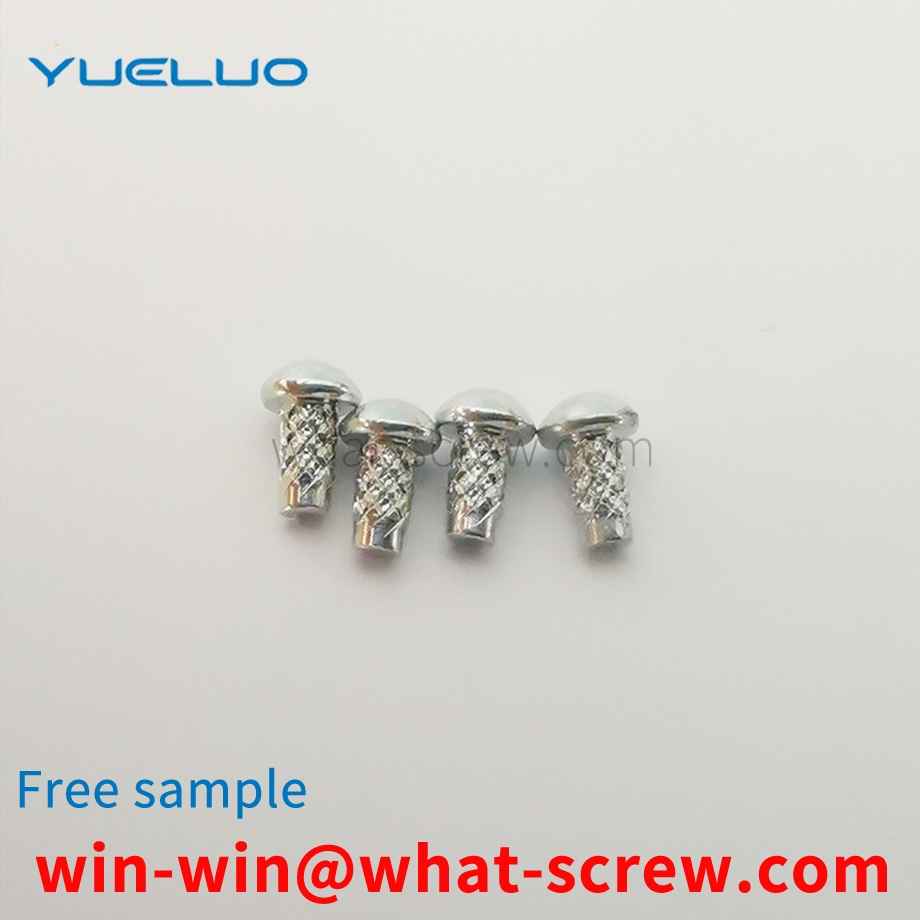The self-tapping locking screw is a series of coarse thread and ordinary thread, and the thread size is M3~M12mm. The threaded rod of the self-tapping locking screw is a thread with an arc-shaped triangular section. The screw is surface hardened and can be screwed into a prefabricated hole of black or non-ferrous metal material (which can be made by drilling, punching or die casting), and extruded to form an internal thread. The threaded rod portion can be made into a cylindrical or triangular shape with a diameter equal to or less than the circumscribed circle. Self-tapping locking screws have low screw-in torque and high locking performance. The varieties of self-tapping locking screws in the product standard of Chinese commodity fasteners include GB/T6560 (cross-recessed pan head), GB/T6561 (cross-recessed countersunk head), GB/T6562 (cross-recessed half-sunk head), GB/T6563 ( Hexagon head), GB/T6564 (hexagonal flower-shaped cylindrical head) five series. Self-tapping locking screws are generally fastened with pneumatic or electric screwdrivers. Most of the automotive industry uses hexagonal head, cross recessed pan head and hexagonal socket head self-tapping locking screw with high fastening efficiency.
At present, drum brakes are usually used for rear brakes of automobiles, and pump parts assemblies are widely used. The traditional assembly method is to use tools such as screwdrivers and retaining ring pliers for assembly. The disadvantage is that the assembly efficiency is low, the accuracy is average, and assembly quality problems are prone to occur, which affects the performance of the product assembly. Now take the brake wheel cylinder assembly with automatic clearance adjustment mechanism produced by our factory as an example to illustrate the installation of the elastic retaining ring
Reference standard GB 90 Fastener acceptance inspection, marking and packaging GB 196 Basic dimensions of ordinary threads (1~600mm in diameter) GB 197 Tolerance and fit of ordinary threads (1~355mm in diameter) GB 230 Test method for Rockwell hardness of metals GB 699 High-quality carbon Plain structural steel technical conditions GB 1237 Marking method of fasteners GB 5267 Electroplating layer of threaded fasteners GB6394 Determination of average grain size of metals
The pull-out type positioning pin and the tie-suspended type positioning pin are in the form of a straight cylindrical shape. The pull-out locating pin is temporarily pulled out from the connected piece of the tooling, and it is in a loose state; the tail of the tie-suspended locating pin is connected with a tie such as iron wire or string to the connecting piece of the tooling. After the locating pin is pulled out, the tie Suspended on tooling. The main disadvantages of the two types of positioning pins are as follows: First, the suspension straps are easy to fall off after long-term wear, and the pull-out positioning pins of the same parts are not convenient for on-site storage and placement, and are usually placed on the nearby ground at will; All kinds of positioning pins are prone to position transfer, forgetting and losing, which affects the reset of the tooling and the subsequent manufacture and assembly of aircraft products.
Swimming self-locking nut GJB 125.1~125.6-86 The double-ear sealing swimming self-locking nut is composed of four parts: sealing cover, self-locking nut, pressure ring and sealing ring. It has compact structure and reliable sealing, and is suitable for products whose working pressure is not more than 2atm, working medium is gasoline, kerosene, water or air, and the operating temperature is -50~100℃. However, it has certain difficulties in the manufacturing process and air tightness test.
We have many years of experience in the production and sales of screws, nuts, flat washers, etc. The main products are: round head knurled hand screw bolts, needle roller pins, nylon cap hexagon nuts, flange bolts and other products, we can provide you with The right fastener solution for you.



















 Service Hotline
Service Hotline




